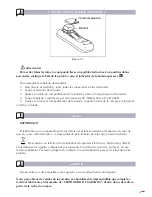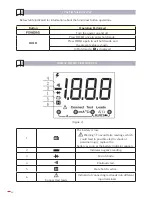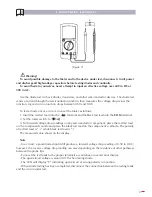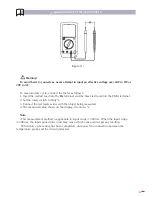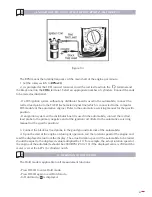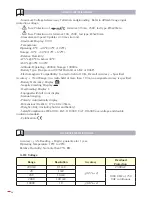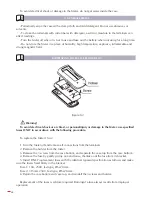
36
D. RESISTANCE TESTING (SEE FIGURE 6)
(figure 6)
Warning!
To avoid damages to the Meter or to the devicesunder test, disconnect circuit power and
dischargeall the high-voltage capacitors before measuring resistance.
To avoid harm to yourselves, never attempt to inputan effective voltage over 60V in DC or
30V in AC.
The resistance ranges are: 200Ω, 2kΩ, 20kΩ, 200kΩ, 2MΩ and 20MΩ.
To measure resistance, connect the Meter as follows:
1. Insert the red test lead into the
Ω
terminal and theblack test lead into the
COM
terminal.
2. Set the rotary switch to an appropriate measurementposition in
Ω
range.
3. Connect the test leads across with the object beingmeasured. The measured value shows on
the display.
Note
- The test leads can add 0.1Ω to 0.2Ω of error to theresistance measurement. To obtain precision
readingsin low-resistance, that is the range of 200Ω, short-circuit the input terminals beforehand
and record thereading obtained (called this reading as X). (X) is theadditional resistance from the
test lead.Then use the equation:
measured resistance value (Y) – (X) = precisionreadings of resistance.
- When the resistance reading ≥0.5Ω in the short-circuitcondition, please check for loose test
leads or other reasons.
- For high resistance (>1MΩ), it is normal taking severalseconds to obtain a stable reading, and it
is better tochoose shorter test lead.
- When there is no input, for example in open circuitcondition, the Meter displays “
1
”.
- When resistance measurement has been completed,disconnect the connection between the
testing leads and the circuit under test.
Содержание egatronic 51259
Страница 50: ...50...




